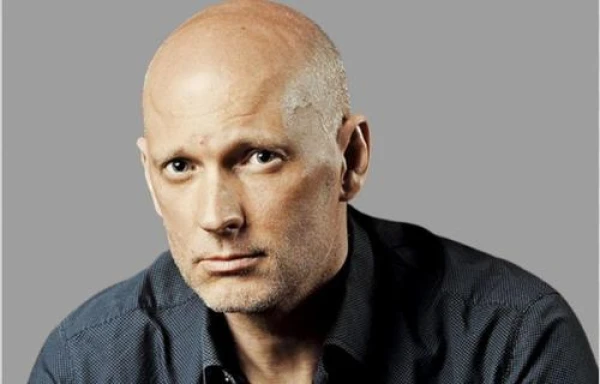
In the field of public transport, the demand for trains is growing, and on several routes, passengers would even like to see more electric trains. But the situation with buses in the regions is quite different, which is why the 'on-demand' transport model will be implemented on the least populated routes in 2026, said Minister of Transport Aitis Shvinka on Latvian Radio 4.
A question was posed to the minister in the LR4 studio: will the number of public transport trips on the Riga — Jelgava — Riga route be increased? In the morning, the trains are overcrowded, during the day there is one train per hour, while the majority of residents in this region work in Riga, and the number of bus trips on this route has also decreased. People want to understand what to expect.
"I can say that passenger trains are valued, people are using them more and more each year. This year, the total number of trips in Latvia will be around 20 million. As a minister, I see:
yes, we have problems with rolling stock, we need to increase the number of trips.
And one thing is the number of trains needed, but another is the Riga Central Station. You see it — we need to put these facilities, platforms in order so that we can bring everyone on time," said Aitis Shvinka.
Increasing the number of trips on the railway is expensive and time-consuming, but according to the minister, the Ministry of Transport has a plan to discuss joint opportunities on the Tartu — Riga route with Estonian colleagues at the end of the year.
"A route will be opened, and the same train will go to Daugavpils in the evening and return to Riga in the morning to go to Tartu again and then back. So on this Vidzeme-Latgale route, we are getting an additional trip. Yes, from 2029 there will be Bemu trains (battery-powered electric trains, the Cabinet approved the purchase of nine such units in September. — Note from LSM+), and they will already provide a huge leap in servicing railway routes.
I find it difficult to comment on the Jelgava route, but regarding the number of units — we are currently looking at where they are most needed and where we can provide trips for people.
But I agree — many have told me that the trains are overcrowded, and they would like more. We are looking for a solution on where else we can get trains to ensure this."
There will inevitably be fewer regular bus routes
On some regional bus routes currently subsidized by the state, passenger transport is unprofitable for commercial operators. For example, a bus is running with only one passenger sitting in it.
The Road Transport Administration, as previously reported, is considering reducing the network of regional public transport routes by 16%. Residents of rural areas fear that it will become impossible to leave some settlements without their own car. This has also been considered in the ministry, says Shvinka:
"Regarding one or two people: by the end of next year, we will implement on-demand transport. These will be additional resources. The first 5 years — from European funds (Climate Fund). There will be a large fleet, and people will be able to call the dispatcher or submit a request for a trip via a mobile app — and get to the nearest mobility point or to where they need to go. And thus, the public transport network will be supplemented. So in such cases, when one, two, or three people are involved, and a large bus is not required, we could additionally use smaller transport units.
We have not invented anything new for this; such a system exists, and we are implementing it.
It works in Germany, France, Switzerland, and Ireland. There is a ready-made planning system, a ready-made mobile application. This is what we have seen in various regions abroad. And we can take this to Latvia — we can indicate vehicles and places where fleets are needed, vehicles — in sparsely populated areas."
According to Aitis Shvinka, this project for acquiring all vehicles, IT systems, and implementing dispatch centers will cost, according to the Ministry of Transport's calculations, 32 million euros over five years.
"We create and maintain [the bus fleet]. So my plan is as follows: we are not looking beyond 5 years right now, but we will need to allocate additional budget for this in the future. And in this way, we are relieving the public transport networks and ensuring mobility for these people.
Regarding the 16% reduction, I will clarify. This is not the elimination of routes! We are looking, for example, at the intensity:
if it is necessary to travel more frequently on working days — perhaps on weekends the same route can be serviced less frequently.
And thus, [state-funded] kilometers are saved. If we look at the Riga district — there are routes that are in high demand. Can commercial transport operate there, or should it be state-subsidized transport? We can transfer the route to commercial transport, and the transport remains — only as a commercial trip.
If we see that a route duplicates a train — we understand that the train can provide this, and we can ensure this mobility from one point to another by train."
In the coming year, the Ministry of Transport plans to work with local municipalities to figure out how a person, regardless of the means of transport, can quickly get from point A to point B.
"The municipality says, and we are looking at how this will happen over the next year. If we see that there is a problematic route, and we have a plan to reduce it, but the municipality proves that passenger transport cannot be implemented there in any other way — then we will keep it for now until we find other ways to ensure movement."
The minister emphasized that the 16% reduction is "not a linear action in Excel," not a simple cut in funding.
"At the same time, it should be understood that within the existing budget, we have allocated funds for regional transport — and we need to find a solution on how to provide it. This is difficult and challenging, but we are looking for the best solutions.















Leave a comment